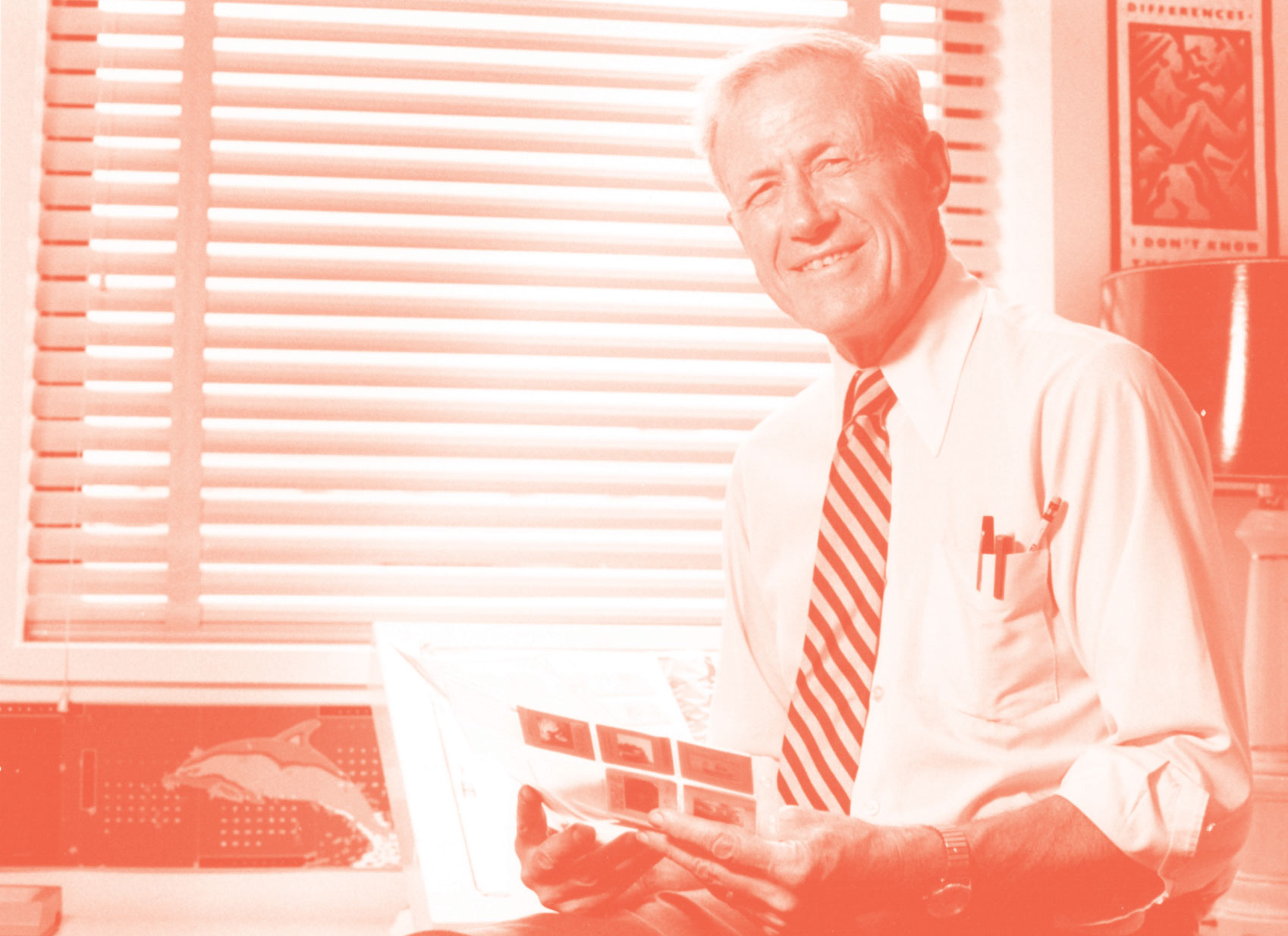Remembering John Mattill

MIT Technology Review lost one of the architects of the magazine’s modern incarnation with the death of former editor in chief John I. Mattill, 97, on March 10, 2019.
Mattill spent virtually his entire career at the Institute. In 1952 he established MIT’s Office of Publications, which came to be celebrated internationally as a greenhouse of design. From 1966 to 1988, he oversaw the transformation of Technology Review from an alumni publication into a national magazine that was hailed as a bona fide journalistic enterprise.
Though not a designer, Mattill championed the marriage of editorial content and visual presentation, and he hired MIT’s first graphic designers: Muriel Cooper, Jacqueline Casey, Ralph Coburn, and Dietmar Winkler. The four became leaders in the then-new field of graphic design, absorbing the Bauhaus sensibility to create the widely admired “MIT Look.”
But Mattill’s greatest passion was Technology Review. He’d fallen in love with MIT—awed by all that it did for the world—and saw the magazine as a way to shine a spotlight on its many newsworthy pursuits.
Under Mattill, Technology Review evolved in three ways. First, technology coverage embraced not just the nuts and bolts but also the costs, benefits, and impacts (on individuals, communities, countries, and the planet), regularly taking political constraints, business objectives, military policies, and more into account. That is, stories about technology had to cover both technology and its implications.
Second, such stories would not necessarily focus on MIT. Even a provincial reader who cared only about MIT needed to learn of other relevant players’ contributions in order to assess how MIT was doing.
And while Technology Review was founded in 1899 to serve MIT’s alumni, under Mattill it increasingly attracted other readers. When he hired me in 1979 as his managing editor, the magazine had about 100,000 subscribers, half of whom were graduates or members of the MIT community. But the other half had no known connection to MIT; when I became editor in chief in 1991, that group had grown to some two thirds of our readers.
Born on September 12, 1921, in Rochester, New York, Mattill grew up in Iowa City, Iowa (where he met his future wife, Anne Waterman), graduated from Carleton College, and served in the US Army Signal Corps during World War II. After earning an MA in technical writing from the University of Iowa, he joined MIT’s news service in 1948.
During his long career, Mattill’s editorial skills, rigorous standards, and professionalism inspired his staff. Hard-working and productive, he disliked being complimented, as he never felt he had worked hard enough, or secured good enough stories, or dug deep enough. He believed praise was irrelevant. You deliver a high-quality product simply because you are supposed to—it’s your job.
Mattill was especially adept at rescuing the writings of expert authors, who sometimes wrote in tongues. And he could turn the most tedious, jargon-filled, seemingly hopeless manuscript into a thing of beauty. But whatever their skill level, Mattill had great respect for writers and treated them with diplomacy and kindness because he appreciated their courage. “The ability to face the blank page,” he liked to say, “is what separates the men from the boys.”
Keep Reading
Most Popular
Large language models can do jaw-dropping things. But nobody knows exactly why.
And that's a problem. Figuring it out is one of the biggest scientific puzzles of our time and a crucial step towards controlling more powerful future models.
The problem with plug-in hybrids? Their drivers.
Plug-in hybrids are often sold as a transition to EVs, but new data from Europe shows we’re still underestimating the emissions they produce.
Google DeepMind’s new generative model makes Super Mario–like games from scratch
Genie learns how to control games by watching hours and hours of video. It could help train next-gen robots too.
How scientists traced a mysterious covid case back to six toilets
When wastewater surveillance turns into a hunt for a single infected individual, the ethics get tricky.
Stay connected
Get the latest updates from
MIT Technology Review
Discover special offers, top stories, upcoming events, and more.